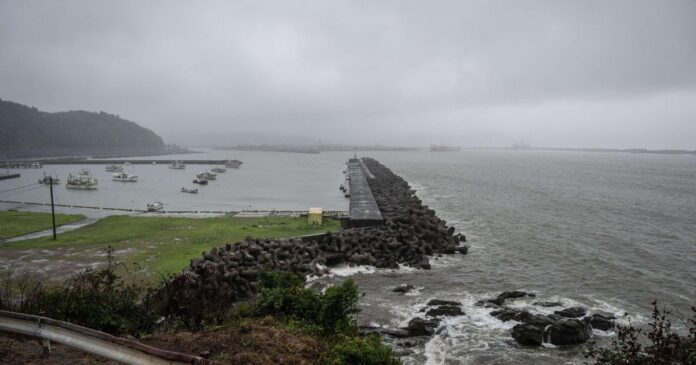A strong earthquake and several subsequent tremors rattled northern Japan on Sunday evening, triggering tsunami advisories along the coast, according to the Japan Meteorological Agency.
The earthquake, with an upgraded magnitude of 6.9 and depth of 20 kilometers — or about 12 miles — struck off the coast of Iwate prefecture at 5:03 p.m. Japan time, according to the meteorological agency.
There were no immediate reports of injuries or damage, or any reports of abnormalities at the two nuclear power plants in the area.
The agency issued advisories for areas along Japan’s northern coast where the tsunami could reach 1 meter, or 3 feet, although meteorologists initially said the water to rise as high as 3 meters, or about 9 feet, in some locations. It downgraded tsunami advisories to tsunami forecasts in several places along that coastal region, which means the tsunami’s impact was then expected to be 0.2 meters, or about 8 inches, high. Tsunami forecasts are issued when “slight sea level changes” are expected, according to the agency.
A tsunami of about 10 centimeters, or about 4 inches, was detected at Ofunato city in Iwate Prefecture, Ominato port, Miyako and Kamaishi, and subsequently as high as 20 centimeters, or about 8 inches, in the coastal area of Kuji. The tsunami that followed in Ofunato also reached 20 centimeters, or about 8 inches, according to the agency.
Tsunami waves that follow earthquakes can continue for a few hours afterward, hitting the coast repeatedly, and can possibly get bigger with time.
While the advisory was in place, people were warned to stay away from the ocean and coastal areas and told that more shaking could follow in the area.
The tsunami advisory was lifted about three hours after the initial quake, but the meteorological agency told reporters the area was at risk for strong quakes for about a week, especially the next two or three days.
More quakes were recorded in Iwate Prefecture, and the northernmost major island of Hokkaido was also rocked by the series of quakes.
Northeastern Japan is prone to earthquakes, including a triple disaster of a quake, tsunami and a nuclear meltdown in Fukushima, just south of Iwate, in March 2011, that killed nearly 20,000 people, mostly from the tsunami, and severely damaged the Fukushima Daiichi nuclear power station.
More than a decade later, people still remain displaced from the no-go zone. Demonstrations are still periodically held, as recently as Saturday, to protest what is being seen as a lack of recognition by the authorities of the serious risks of nuclear power.
An agency official, briefing reporters late Sunday, said there was nothing to indicate the latest quake was directly related to the one in 2011, except that the region was generally at risk for major quakes, including another one that hit in 1992.
Bullet trains in the area were temporarily delayed, according to the JR East railway operator. Japan, which sits on the Pacific “ring of fire,” is one of the world’s most earthquake-prone countries.
Disclaimer : This story is auto aggregated by a computer programme and has not been created or edited by DOWNTHENEWS. Publisher: cbsnews.com






